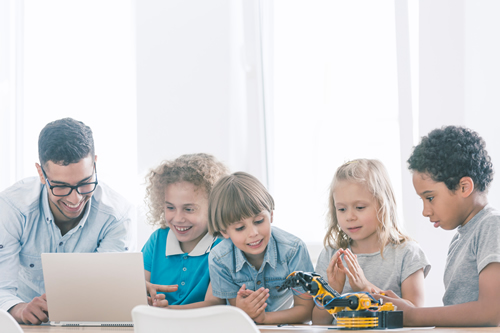Being able to recall facts may help you look good in front of your friends during trivia night, but memorizing content of the past has become largely irrelevant in today’s modern society. When it comes to education, the undeniable truth of the testing culture from the past 20 years is that children arrive to the working world woefully unprepared to deal with interpersonal relationships or even the ability to work in teams. This has as much to do with poor academic skills gained as it has to do with the lack of acquiring and developing basic social and emotional skills associated with positive human relationships. The hue and cry of the media announcing the demise of public education begs the question: What is the best solution for helping students prepare for the 21st-century workforce?
For a growing number of schools and districts, introducing social-emotional learning (SEL) into the classroom in the context of 21st-century learning is the answer.
SEL skills and competencies, as defined by Collaborative for Academic, Social, and Emotional Learning (CASEL), include self-awareness, self-management, social awareness, relationship skills, and responsible decision making—all of the valuable soft skills important for lifelong success. The challenge is how to do this in an engaging and relevant manner.
For many, integrating curriculum around coding and programming to learn the “language” of technology while practicing the language of SEL has been the answer. A course previously taught only in college quickly trickled down to classes in high school. Now, even elementary and preschools are incorporating some level of coding into their agenda, demonstrating how young children are capable of developing an understanding of basic coding concepts.
I believe teaching early learners to code impacts their ability to gain SEL skills and should be taught together. Here are four reasons why:
1. Coding provides the right mix of challenge and engagement to allow SEL skills to develop naturally. Despite what many may think when they hear the word “coding,” the skills children learn from coding are far from technical. Instead, coding teaches students important SEL skills that can be applied to many areas of their lives, including a more positive attitude toward themselves, positive social behaviors and relationships, less emotional distress and resilience, and improved academic performance. This is because coding is a great way to help learners explore, strengthen, and expand their critical-thinking and problem-solving muscles. For instance, coding requires breaking down large complex tasks into smaller simple tasks that are more manageable. Through this process, they’re also learning from mistakes based on trial and error.
2. Coding creates play-based learning opportunities, which is one of the best ways to learn SEL skills. Everyone, especially students in grades K-2, learns best in a hands-on, play-based environment. When we are at play we are the most engaged and the most creative; we learn from our failures and develop the grit so often characterized in the SEL community. The various types of play—solitary, parallel, pretend, and cooperative—allow children to develop collaboration and social skills.
KUBO, our newest hands-on, puzzle-like coding solution for grades K-2, is intentionally screen-free to introduce young students to basic coding concepts in a fun and engaging way where they get to play, learn, and collaborate. You can find more great coding resources and activities for all levels that incorporate play-based learning and SEL skills at Code.org and CASEL.
3. Coding, complemented by SEL skills, paves way for the rise of the female engineer. One of the greatest issues we face when coding is introduced later in a child’s life is the self-selected gender stereotypes that influence their affinity for coding or math. Starting as early as third grade, girls tend to opt out of science and math when gender-selected pursuits show up. Consequently, we have an opportunity to engage girls in engineering (through coding) at an age when they are not influenced by gender stereotypes. With increased attention around SEL, coding in the classroom—when incorporated correctly—plays an important role in closing the gender gap in engineering.
4. Coding is interactive and fun, providing a positive environment for SEL. We know that when older children get involved in toxic environments, the harder it is for them to break out of the habits formed in these counterproductive situations. Additionally, collaborative SEL skills are more difficult to teach in environments where the outcomes are either prescriptive, such as in content classes, or are too ill-defined to provide a good collaborative solution.
Simply put, SEL is best and most effective when learned early and within a positive environment. Incorporating physical and interactive coding solutions not only gets students working together in small groups, but it allows them to experience coding in a positive, cooperative learning environment where collaboration and communication is encouraged.
As the famous author and teacher Robert Fulghum said, “Most of what I really need to know about how to live and what to do and how to be, I learned in kindergarten.” Teaching young minds coding concepts starting in kindergarten helps make SEL instruction more meaningful and, in turn, better prepares today’s students for a future we cannot predict.
- How digital tools and AI can enhance social studies - April 23, 2024
- Using universal screening to improve student well-being - April 22, 2024
- 3 ways to avoid summer learning loss - April 19, 2024


